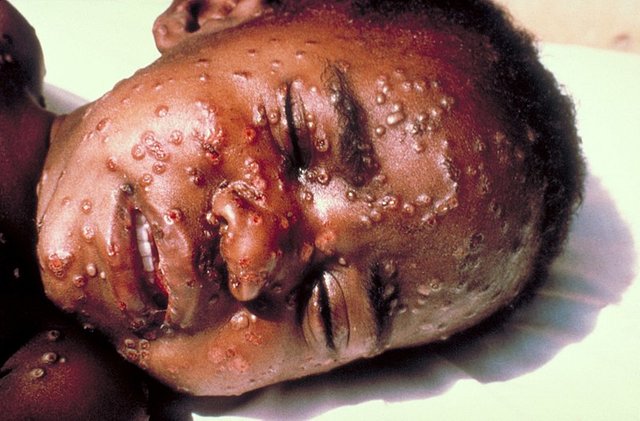
Typical affection of the eye in the course of an MPOX disease are:
- Eyelid affections with affection the conjunctiva or even of the cornea (Conjunctivitis versus Keratitis)
- MPOX conjunctivitis is often correlated with poor prognosis or a severe systemic infection
- Keratitis in case of MPOX affection is a really dangerous situation which is able to develop a corneal ulcer of the eye and propably a total loss of the eye if not treated adequately or the treatment fails.
- Scleritis is very painful and even can lead to necrosis and severe inflammation of the eye with consequtive loss of the eye.
- Normally rare phlyctanes of the conjunctiva has been observed in the case of MPOX affection. This special form of conjunctivitis needs special treatment strategies.
- Uveitis and secondary glaucoma are further complications of MPXROD spectrum diseases of the human eye. They can lead to cystoid macula edema and secondary visual loss by destruction of the retina structure - similar to observed cases of choroiditis and retinitis or chorioretinitic affection of the back of the eye.
- Papillitis or retrobulbarneuritis, a dangerous affection of the optic nerve is even possible and able to lead to blindness if the disease did not respond to therapy.
Unvaccinated MPOX patients are developing significant more MPOX related ocular disorder than vaccinated. Around 3-4% of the Clade 1 MPOX patients at the democratic republic of Congo are developing a keratitis, and up to 27% of the clade 1 patients at the DRC are developing a difficult to treat conjunctivis. The unvaccinated patients has a significant higher risk to develop devasting scars of the cornea and/or the conjunctiva and eyelid or in worst case a corneal perforation as result of an ulcus - combined with heavy pain, loss of visual function and loss of quality of life.
Patients and healthcareworkes should be aware not to autoinocculate pox material into the own eye by rubbing with a contaminated hand or finger for example a healthy eye. Such an inoculation of the MPOX Virus to the eyes is able to destroy even the visual function of the last eye.
A restoration of vision when the cornea has already developed massive scars is difficult and risky. The best way to protect an affection of the eye by MPOX is vaccination. If there is already a Conjunctivis or keratitis an offlabel use of Trifluridin 1% every 2 hours is possible and after reepitheliasation of the cornea it can be reduced to every 4 hours for the next 7 days. The therapy should last until all ocular and perioculare affections by MPOX has disappeared.
Despite such a treatment the risk of corneal ulcer remains - even when the MPXROD has dissappeared and scars of the cornea are visible.
Even more than 6 (!!!) weeks after onset MPOX an MPXROD has been observed, even like viral shedding combined with the occurence of a keratitis.
Human to human transmission should be avoided by using protective equipment in every healthcare setting of MPOX patients.
Keine Kommentare:
Kommentar veröffentlichen